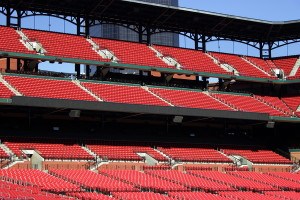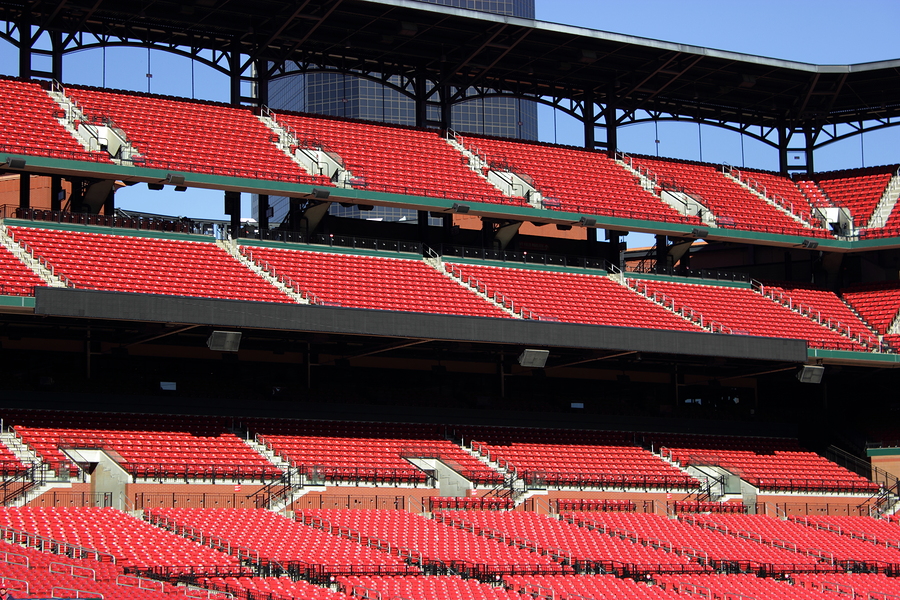Larry Bowman stood at the Turner Field railing where a fan had fallen to his death one night earlier, wondering how it could have happened.
“Look how high it is,” Bowman said Tuesday, placing his hand on the bar atop the 42-inch railing. “It’s almost chest high. You would have to … well, I don’t know.”
No matter how many safety measures are in place at stadiums and arenas, experts say there’s no way to totally prevent falls like the one that killed a Braves fan at a game in Atlanta. Ronald Lee Homer Jr. fell 85 feet to his death Monday night after tumbling over the fourth-level railing.
“It’s sad to say someone could lose their life and not yield some lesson for the rest of us, but this one is pretty close based on the initial reports,” said Steve Adelman, an attorney who is considered an authority on venue safety and security. “It’s just a tragedy.”
Homer’s death was the third at an Atlanta stadium in the past year. Since 2003, there have been more than two dozen cases of fans falling at stadiums across the United States, according to the Institute for the Study of Sports Incidents.
 But that doesn’t mean the stadiums are unsafe, said Alana Penza, director of the institute, which is part of the National Center for Spectator Sports Safety and Security, based at the University of Southern Mississippi.
But that doesn’t mean the stadiums are unsafe, said Alana Penza, director of the institute, which is part of the National Center for Spectator Sports Safety and Security, based at the University of Southern Mississippi.
“The reality is, you have to think about how many of these incidents actually happen at a venue. Not that many,” Penza said. “They’re devastating when they do happen, but they’re not a lot. You do the best to keep yourself safe, but you can’t always forecast what’s going to happen.”
Though teams and municipalities can build stadiums in the design of their choosing, all must meet strict safety guidelines. The International Building Code is the industry standard, adopted in all 50 states and the District of Columbia. It calls for railings in front of seats to be a minimum of 26 inches. Protective railings in open-sided areas, such as concourses on the outer edges of stadiums, have a minimum height requirement of 42 inches.
An Associated Press reporter on Tuesday measured the guardrail of the smoking platform where Homer stood before he fell, and it was 42 inches. That would reach the top of the stomach on a 6-foot man. Homer was 6-6.
Most fans surveyed at ballparks around the country Tuesday said they felt safe, even in the aftermath of Homer’s death.
“I don’t really know how much more they can do,” said Brandon Moskowitz, who was at a game at Wrigley Field with his father.
Indeed, safety can’t be guaranteed even when ballparks go beyond the minimum requirements.
At Rangers Ballpark in Arlington, Texas, the guardrails in front of the left-field seats were 34 inches, well above local and international building requirements. Yet that didn’t prevent firefighter Shannon Stone’s fatal fall in July 2011, when he reached out to catch a ball tossed his way by then-Texas outfielder Josh Hamilton. Stone’s accident was witnessed by his 6-year-old son.
After Stone’s fall, the Rangers raised all front-row railings that were above field level to at least 42 inches, with some being raised by more than a foot. (There already were 42-inch rails at the base of steps leading to first-row seats, and all along the second deck of seats high above right field in an area known as the Home Run Porch.) The new raised railings in the $1.1 million project included beveled tops and leaned slightly inward, making it safer for fans in front-row seats throughout the stadium.
“We take it seriously,” Rangers general manager Jon Daniels said Tuesday. “We’ve had outside people come in and evaluate it. Obviously, we raised the railings and have done a lot to make people aware, both our employees, and our fans, but (Homer’s death) that’s tough. … That’s tough to hear.”
Even with guardrails, netting, enclosed walkways and any number of other safety measures, Adelman said the best protection for fans will always be common sense.
“This is going to sound so obvious: Be careful. Be aware of your limitations. Be aware of the space around you,” he said. “If you’re someone who doesn’t have the greatest body control, don’t go leaning over things where you could have a bad result if you fall. Watch your kid. Keep them close to you. The advice is really just be aware of your surroundings and don’t take needless risks.”
Steven Davidson, who was taking in a Yankees game Tuesday with his 13-year-old son, agreed.
“You wouldn’t lean too far over the Grand Canyon or over Niagara Falls,” he said. “So why do it at a sporting event?”
(AP Sports Writers Charles Odum, Stephen Hawkins, Howie Rumberg, Jay Cohen and Brian Mahoney contributed to this report.)
Was this article valuable?
Here are more articles you may enjoy.


 NYT, Chicago Tribune Sue Perplexity AI as Copyright War Rages On
NYT, Chicago Tribune Sue Perplexity AI as Copyright War Rages On  Zillow Deleting Climate Risk Scores Reveals Limits of Flood, Fire Data
Zillow Deleting Climate Risk Scores Reveals Limits of Flood, Fire Data  Truckers Who Fail English Tests Get Pulled Off Roads in Trump Crackdown
Truckers Who Fail English Tests Get Pulled Off Roads in Trump Crackdown  California Again Delays Wildfire Protection Rules for Homes
California Again Delays Wildfire Protection Rules for Homes 